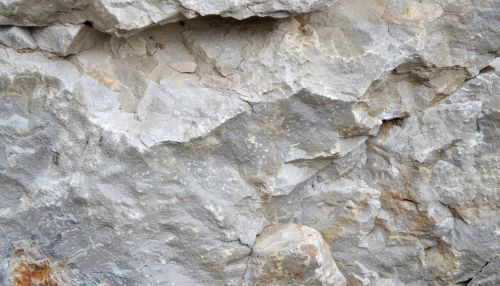Limestone
Introduction
Limestone is a sedimentary rock primarily composed of calcium carbonate in the form of the mineral calcite. It is a significant rock type as it forms about 10% of the total volume of all sedimentary rocks. Limestone is formed either by direct crystallization from water (usually seawater) or by the accumulation of shell, coral, algal, and fecal debris. It can also be formed by the precipitation of calcium carbonate from lake or ocean water.
Formation
Limestone is formed in two main ways, namely, biological and non-biological processes. In the biological process, marine organisms such as corals, algae, and shells accumulate over time, forming limestone. The non-biological process involves the precipitation of calcium carbonate from water.
Biological Process
In the biological process, marine organisms like corals, algae, and shells produce calcium carbonate, which accumulates over time. When these organisms die, their shells and skeletal fragments gather on the seafloor. Over time, these fragments are compacted and hardened into limestone rock. This type of limestone is known as biogenic limestone.
Non-Biological Process
In the non-biological process, limestone forms when calcium carbonate precipitates out of water. This can occur in both freshwater and marine environments. When the water becomes supersaturated with calcium carbonate, it precipitates out, forming a layer of sediment on the bottom of the water body. Over time, this sediment is compacted and hardened into limestone rock. This type of limestone is known as chemical limestone.
Types of Limestone
There are several types of limestone, each with its unique characteristics. These include chalk, coquina, fossiliferous limestone, lithographic limestone, travertine, tufa, and others.
Chalk
Chalk is a soft, white, porous form of limestone composed of the mineral calcite. It forms under relatively deep marine conditions from the gradual accumulation of minute calcite shells shed from micro-organisms called coccolithophores.
Coquina
Coquina is a type of limestone composed of shell fragments. It is a sedimentary rock that is formed from the cementation of shell fragments and calcium carbonate.
Fossiliferous Limestone
Fossiliferous limestone is a type of limestone that contains visible fossil fragments. These fossils are the remains of ancient plants and animals that lived in the area where the limestone was formed.
Lithographic Limestone
Lithographic limestone is a dense type of limestone composed of very fine-grain, compact calcite. It was originally used as a medium for lithography and is still used today in the production of lithographic prints.
Travertine
Travertine is a form of limestone deposited by mineral springs, especially hot springs. It is often used in Italy and elsewhere as a building material.
Tufa
Tufa is a variety of limestone, formed by the precipitation of carbonate minerals from ambient temperature water bodies.
Uses of Limestone
Limestone has numerous uses, including as a building material, an aggregate for the base of roads, as white pigment or filler in products such as toothpaste or paints, and as a chemical feedstock. It is also used in the manufacture of cement, the burning of lime in kilns, in iron foundries, in the production of glass, and in agriculture.
Environmental Considerations
The extraction of limestone can have significant environmental impacts. It can lead to loss of biodiversity, erosion, and contamination of surface water and groundwater. The production of cement from limestone is also a significant source of carbon dioxide emissions, contributing to climate change.
See Also
- Sedimentary rock
- Calcium carbonate
- Biogenic limestone
- Chemical limestone
- Chalk
- Coquina
- Fossiliferous limestone
- Lithographic limestone
- Travertine
- Tufa


